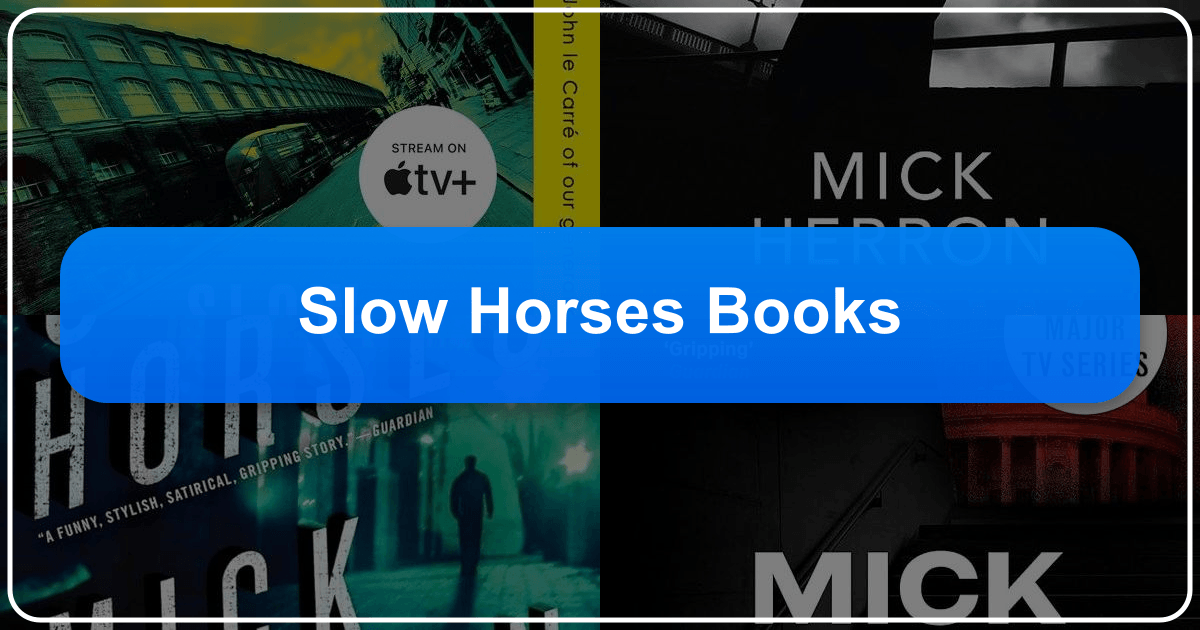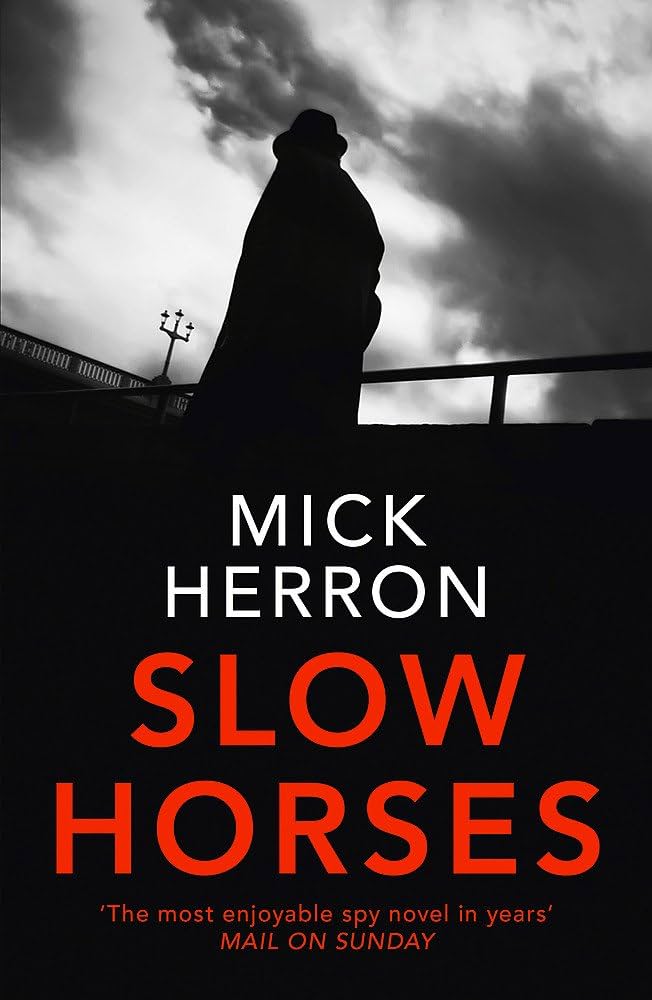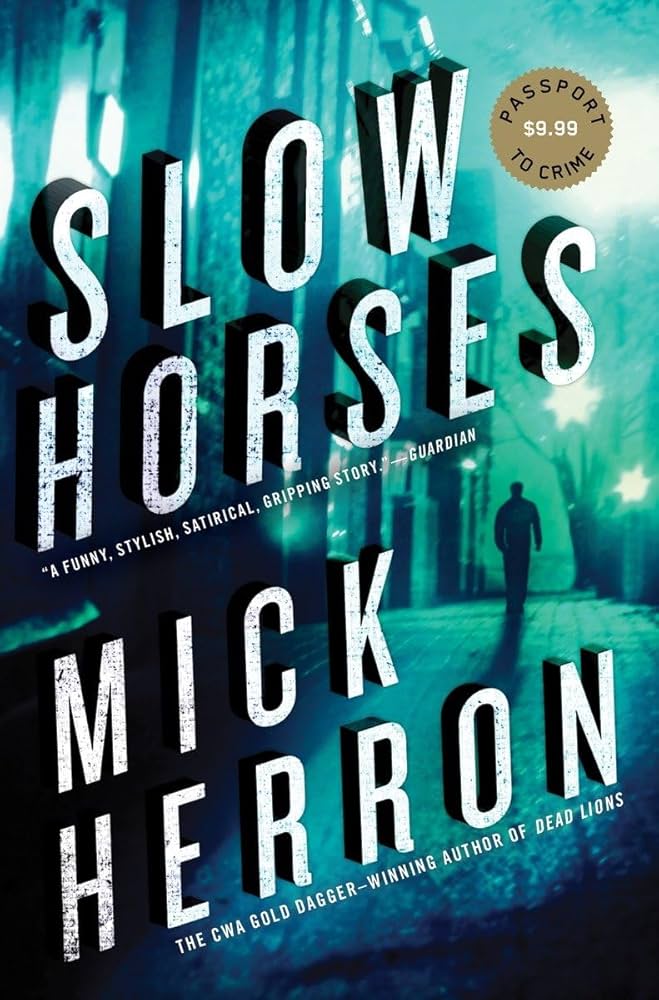Slow Horses Books: A Deep Dive into Mick Herron's Espionage Series

Mick Herron’s Slow Horses series has captivated readers and viewers alike with its darkly humorous take on the world of espionage. The books, collectively known as the Slough House series, follow a group of disgraced MI5 agents relegated to a dreary, underfunded branch office. While seemingly sidelined, these “slow horses” often find themselves unexpectedly thrust into perilous situations, their collective skills and cynical wit proving surprisingly effective. This article explores the Slow Horses books, examining their genre, characters, themes, and cultural impact.
The Slough House Universe: Genre and Themes

The Slow Horses novels firmly reside within the espionage thriller genre, yet they stand apart from traditional spy fiction. Herron eschews the glamorous, action-packed narratives often associated with the genre, instead opting for a grittier, more realistic portrayal of the intelligence world. The focus shifts from high-stakes missions to the often mundane, frustrating realities of bureaucratic infighting and the psychological toll of working in a high-pressure, morally ambiguous environment.
The series is characterized by a distinctive blend of humor and suspense. Herron’s writing is laced with dark wit, often employing sarcasm and irony to highlight the absurdity and cynicism inherent in the lives of his characters. This humor, however, never overshadows the underlying tension and suspenseful plotlines. The books explore themes of redemption, loyalty, betrayal, and the often-blurred lines between right and wrong in the world of espionage. The characters’ flaws are central to the narrative, making them relatable and compelling despite their questionable actions. The setting itself, Slough House, becomes a character, reflecting the disillusionment and stagnation of the agents who inhabit it.
Literary Influences and Style

Herron’s work draws inspiration from classic spy novelists like John le Carré, but with a contemporary twist. Unlike le Carré’s morally ambiguous protagonists, Herron’s characters are often outright flawed and morally compromised, yet their struggles and attempts at redemption create a compelling narrative arc. His writing style is characterized by sharp dialogue, realistic descriptions, and a distinct voice that blends humor with grim realism. The pacing of the novels is deliberate, often starting slowly to build character and atmosphere before escalating into gripping, suspenseful climaxes. This measured approach allows for a deeper exploration of the characters’ motivations and psychological states.

The Cast of Characters: From Misfits to (Sort Of) Heroes
The Slow Horses series boasts a richly developed ensemble cast of characters, each with their own unique backstories, flaws, and motivations. Jackson Lamb, the perpetually slovenly and foul-mouthed head of Slough House, is a central figure, his gruff exterior hiding a shrewd mind and surprising resourcefulness. River Cartwright, a young, ambitious agent whose career has been derailed, serves as a primary protagonist, his journey reflecting the themes of redemption and second chances that permeate the series. The other “slow horses” are a diverse group of individuals, their past mistakes and current circumstances contributing to the overall dynamic and offering a wide range of personalities.
Character Development Across the Series
Herron masterfully develops his characters across the series. Readers see their flaws and vulnerabilities exposed, their relationships evolving, and their perspectives shifting as they grapple with the complexities of their lives and the consequences of their actions. The slow burn nature of the storytelling allows for a deep dive into their personalities and motivations. The relationships between the characters—often characterized by suspicion, rivalry, and begrudging respect—evolve organically, adding another layer of complexity and interest to the narrative.
Exploring the Books in Order: A Reading Guide
Reading the Slow Horses books in order is recommended to fully appreciate the character development and evolving storylines. Here’s a chronological overview:
-
Slow Horses: This inaugural novel introduces readers to Slough House and its dysfunctional inhabitants, setting the stage for the entire series. It focuses on the kidnapping of a young man, a case that forces the slow horses to confront their past mistakes and potentially redeem themselves. Lbibinders.org
-
Dead Lions: Following the events of Slow Horses, this installment sees two Slough House agents land a promising assignment, offering a potential path back to mainstream MI5. The plot centers around the death of a former asset and explores the ongoing tensions and rivalries within Slough House. Lbibinders.org
-
Real Tigers: The kidnapping of a slow horse agent forces the team to work together in a desperate attempt to rescue him. The narrative deepens the characterization, particularly highlighting previously peripheral characters.
-
Spook Street: River Cartwright’s personal life intertwines with his professional obligations as he tends to his ailing grandfather, a former MI5 veteran. New additions to Slough House introduce further dynamics into the mix.
-
London Rules: Diana Taverner’s ambition and manipulations at MI5 headquarters take center stage. The slow horses find themselves embroiled in a series of domestic terrorist attacks.
-
Joe Country: The mystery of a missing person—possibly the son of a deceased agent—pulls the slow horses into another dangerous operation.
-
Slough House: Set in a post-Brexit context, the novel grapples with the privatization of MI5 and the threat of Slough House’s closure, further intensifying the stakes for the slow horses.
-
Bad Actors: This installment sees Diana Taverner, now the head of MI5, under investigation, and facing challenges both from within the agency and from a visit by her Russian counterpart. The slow horses’ expertise might be unexpectedly needed.
The Cultural Impact of Slow Horses
The Slow Horses series has garnered significant critical acclaim and popularity, earning numerous awards and accolades. The books have been translated into multiple languages, solidifying their international appeal. The successful adaptation into a television series on Apple TV+ starring Gary Oldman and Kristin Scott Thomas has further broadened the series’ reach, introducing the characters and their unique world to a wider audience.
Adaptations and Awards
The television adaptation has been praised for its faithful rendering of the books’ atmosphere and characters, even capturing the darkly comedic tone. The success of the show has undoubtedly contributed to the increased popularity of the books and strengthened the series’ position within the contemporary landscape of espionage thrillers. The series’ awards—including the Theakston Old Peculier Crime Novel of the Year and the CWA Gold, Steel and Diamond Daggers—demonstrate the quality and impact of Herron’s writing.
Communities and Fan Engagement
The series has also fostered a strong online community of fans eager to discuss the books and share their thoughts on the characters and plots. This engagement reflects the series’ ability to connect with readers on a personal level, exploring universal themes of failure, redemption, and human connection. The unique blend of humor, suspense, and well-developed characters makes the Slow Horses series a compelling and rewarding read for fans of espionage thrillers and character-driven narratives alike. Lbibinders.org offers further reading on the series.